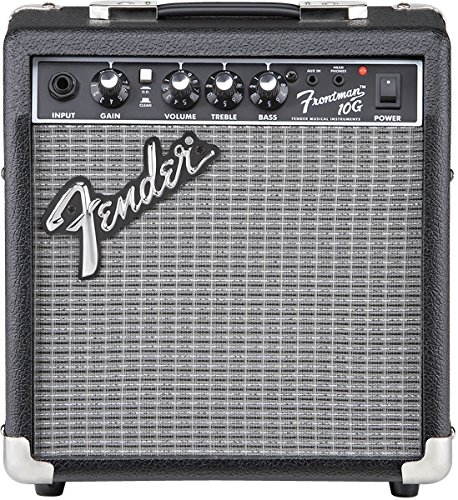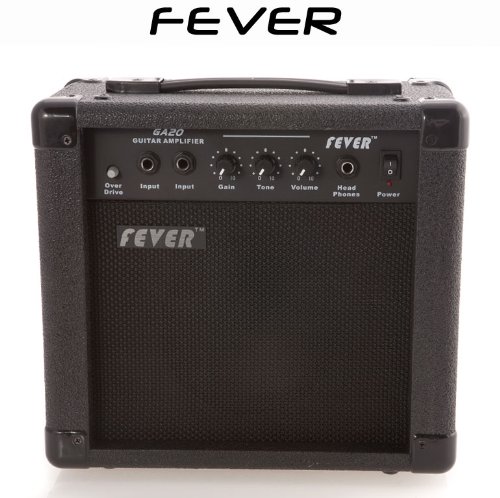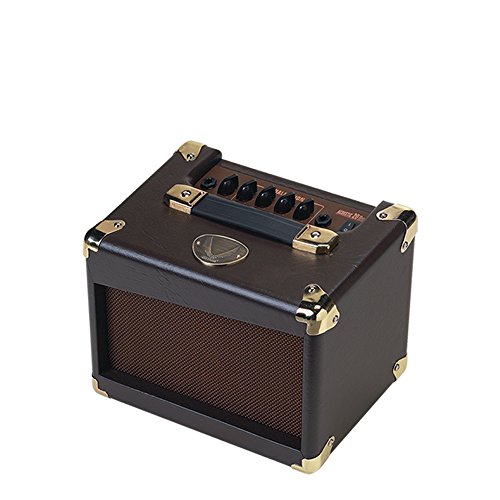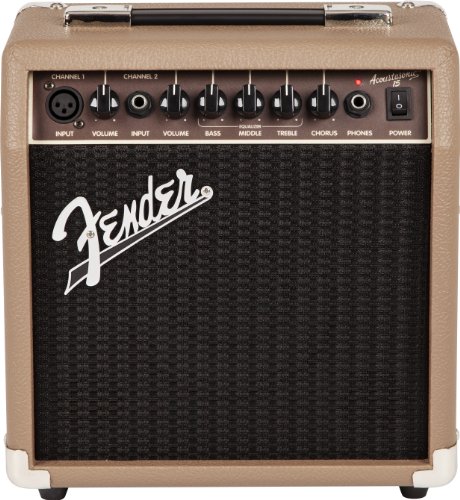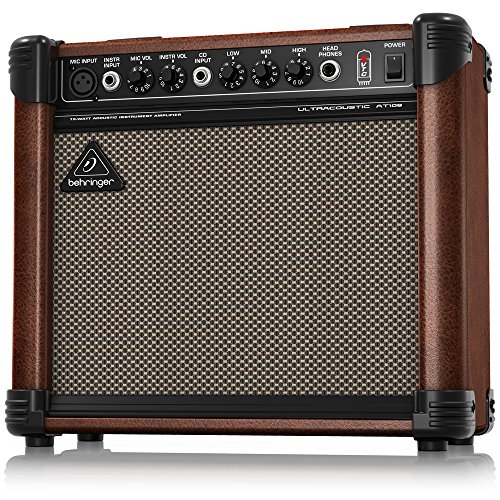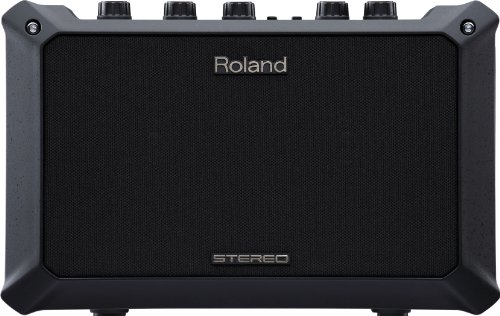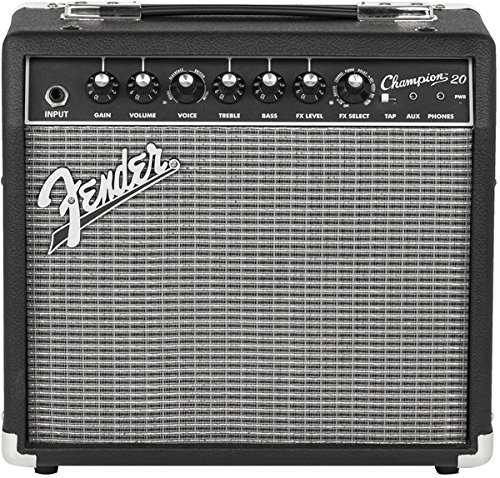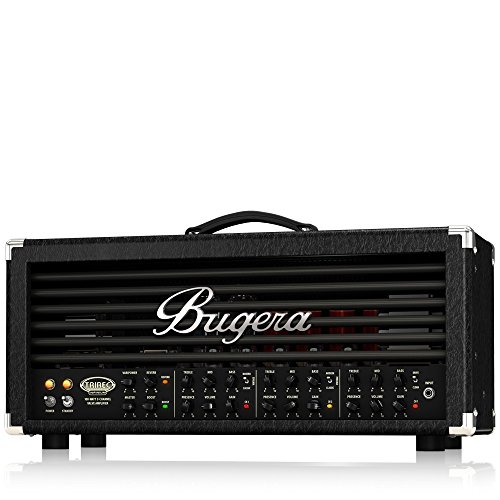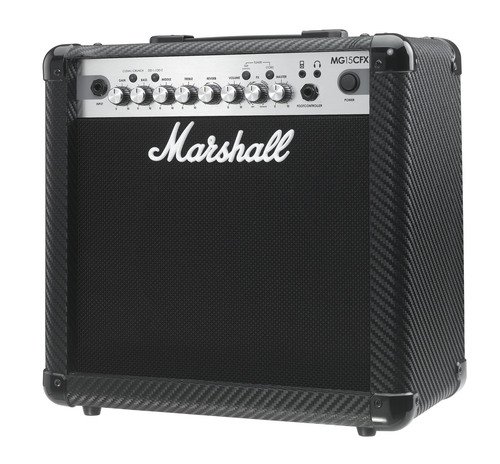While we all may associate amps with electric guitars, acoustic guitars can benefit from using amps too. If you're a gigging musician who plays an acoustic, you may want to consider adding an amplifier to your setup. We've cultivated a list of the best acoustic guitar amplifiers for you. If you don't have time to look into the details of all these key considerations yourself, you can simply browse through our list of best acoustic guitar amps to help you choose. In the market for a mic as well? Check out our top 10 Microphones for recording your new guitar amp.
Here are a few things to keep in mind. There's a huge difference between acoustic and electric guitar amps. Acoustic guitar amps don't color the sound of your guitar the way an electric guitar amp does; they keep the original sound but make it clearer and louder. They also work with acoustic electric guitars.
Table of Contents
When you shop around for the best acoustic guitar amps, there are some key considerations you should always keep in mind. These include the power of the amp which is measured in watts, the number of channels it has, the number of input and output options, the built-in effects, portability, size, and weight.
At a glance: Our top 3 picks
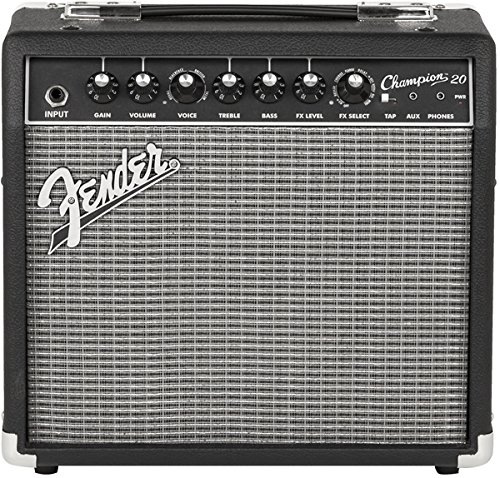
Fender Champion 20

- The EQ section of this amp lets you shape your sound the way you like it. Has lush effects like digital reverbs, vibratone, chorus, and delay.
- Has an auxiliary port for plugging in your MP3 player so you can jam along with your favorite tunes.
- Has a 1/8 inch headphone output jack.
- Capable of supporting almost any genre of music; comes with knobs which go from clean to extremely distorted sounds.
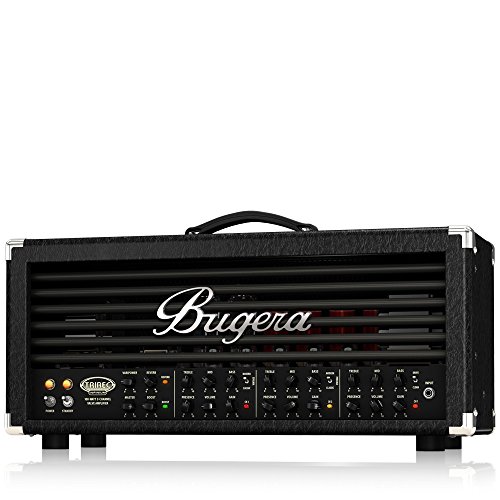
BUGERA TRIREC INFINIUM

- The EQ section of this amp lets you shape your sound the way you like it. Has lush effects like digital reverbs, vibratone, chorus, and delay.
- Has an auxiliary port for plugging in your MP3 player so you can jam along with your favorite tunes.
- Has a 1/8 inch headphone output jack.
- Capable of supporting almost any genre of music; comes with knobs which go from clean to extremely distorted sounds.
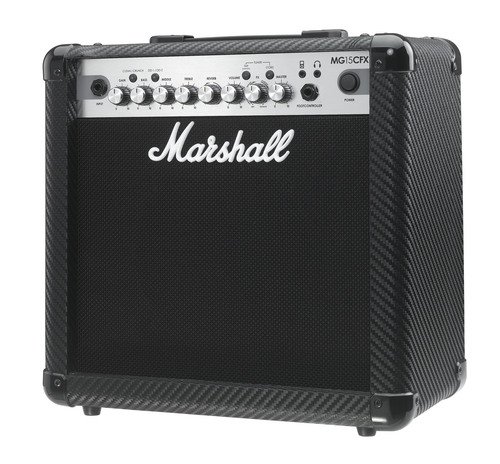
Marshall MG15CFX MG Series

- The EQ section of this amp lets you shape your sound the way you like it. Has lush effects like digital reverbs, vibratone, chorus, and delay.
- Has an auxiliary port for plugging in your MP3 player so you can jam along with your favorite tunes.
- Has a 1/8 inch headphone output jack.
- Capable of supporting almost any genre of music; comes with knobs which go from clean to extremely distorted sounds.
The Greatest Acoustic Guitar Amp of 2024
1. Fender Champion 20
Fender is easily one of the very best in the guitar business. This brand continually sets new standards for instrument manufacturing, producing high-quality instruments since its inception in 1946.
This guitar amp by Fender is versatile, compact, and easy to use. You can plug your guitar into it and play any style of music with a majorly improved guitar sound. Whether you're looking for an amp to stand by you in your first practice session or want to take it out on stage, Fender has you covered with this little beauty.
Pros:
+ The EQ section of this amp lets you shape your sound the way you like it. Has lush effects like digital reverbs, vibratone, chorus, and delay.
+ Has an auxiliary port for plugging in your MP3 player so you can jam along with your favorite tunes.
+ Has a 1/8 inch headphone output jack.
+ Capable of supporting almost any genre of music; comes with knobs which go from clean to extremely distorted sounds.
Why We Liked It - The Fender Champion 20 - 20-Watt Electric Guitar Amplifier is a champion as far as guitar sound amplification is concerned. From the powerto the built-in effects, everything about this guitar amp is perfect and it can be bought for under 500 dollars!.
Amp Size - One of the most important considerations when choosing the right acoustic guitar amp is size. Generally speaking, the larger the amp, the louder the amp can be. Make sure you always start with your amp at the lowest gain setting possible and then gradually increase to meet your needs for the playing session. This will help reduce the possibility of unnecessary feedback.

2. BUGERA TRIREC INFINIUM
This brilliant amp comes with a varipower dial which allows you to go from 1W to 100W. This means you can use this amp anywhere you like, a small apartment at 3 am or a crowded auditorium packed with people.
It also comes with three rectifier modes that are silicon diode, tube, and tube and silicon diode. A rectifier is a device that converts alternating current to direct current, giving more power to your amp. So if you've been wanting a serious power boost, this amp is for you.
Pros:
+ Hand-built and hand-wired for original sound.
+ Comes with three fully independent channels: vintage, classic, and modern.
+ Comes in three rectifier modes for optimum performance every time you use it.
+ Equipped with high-definition reverb and a dedicated reverb control.
Why We Liked It - The amazing features and versatility of every application whether an in-house studio or on stage, make this guitar amp one of the very best you could ever use.
3. Marshall MG15CFX MG Series
If you're looking for a guitar amp for small performances or for practicing, this Marshall is a fantastic choice. This amp is capable of producing great tone due to Marshall's years of experience combined with the latest digital technology.
The features add to the uniqueness of this product, making it different from other brands. It's basically a beginner amp that is also good for small performing setups. Most of the leading guitar players of the world use this amp as their practice amp.
Pros:
+ 15 watts, making it a good practice amp.
+ Comes with 4 programmable channels, OD1, OD2, clean, and crunch.
+ Comes with an MP3 input.
+ Equipped with digital effects such as Phaser, Flanger, Chorus, Vibe, and Octave pedal effect (click here for full guide).
Why We Liked It - The Marshall MG15CFX MG Series 15-Watt Guitar Combo is the go-to choice for many of the world’s leading players as far as practicing is concerned. Who doesn't want to practice like a pro?
Power Needs - If you plan on heading from one show to the next, you'll want to make sure your amplifier of choice is durable enough to meet your needs. Also, take into consideration your power situation: If you plan or hope to busk in the future, you'll need to get an amplifier that can support unplugged power.

4. Fender Frontman 10G
On a budget? Want a really good practice amp? Then check this one out. Fender has a complete range of products to satisfy the needs of both audiophiles and audio pros.
It's the smallest guitar amp by Fender but still has great quality sound. The ease of use that you get with this guitar amp is unmatched.
Pros:
+ 10-watt Fender with enough power for a good practice amp.
+ 1-6” Fender special design speaker for loud sound.
+ Closed back design for heavier bass.
+ Controlslike Gain, Treble, Volume, Bass for simple, easy operation.
Why We Liked It - The Fender Frontman 10G Electric Guitar Amp is the most impressive amp for practicing and is offered at a great price. See more great amps under $300.
5. Fever GA-20
Another product that comes at a reasonable price and is equipped with a number of features. You get 20 watts of power or enough to wake the neighbors, so be careful when turning up the volume on this baby.
Pros:
+ Powerful at 20-watts.
+ Overdrive effect.
+ Scratch-resistant covering which makes it durable.
+ Comes with control functions like volume gain and tone for easy operation
Why We Liked It - This is a great practice amp for beginners available at an amazingly low price.
6. Dean DA20
This amp is ideal for acoustic guitars. From power to the input and output jacks, the built-in effects or the size, weight, and portability, everything you get with this amp is just top-notch.
Pros:
+ 20-watt speaker.
+ Has 4 band EQ to adjust according to your playing style and requirements.
+ Two 5 inch speakers.
+ Has presence control to boost up the mid-range frequencies.
Why We Liked It - The Dean DA20 Acoustic Guitar Amp - 20W is an ideal acoustic guitar amp. It'll amplify your acoustic-electric guitar without adding any color, keeping the original sound intact.
7. Fender Acoustasonic 15
This lightweight, highly portable guitar amp comes with a mic input, so it not only amplifies your guitar sound but also your vocals. It comes with two selectable channels and a chorus effect which makes it quite flexible for both public addresses and musical performances.
Pros:
+ It has a power of 15-watts.
+ 6” Fender speaker that is capable of providing a high-frequency response.
+ Has a headphone jack.
+ Lightweight and ultra-portable, perfect for taking to gigs and performances.
Why We Liked It - If you want that perfect sound from your amp and are concerned about the portability of it, the Fender Acoustasonic 15 is the right product for you.
8. Behringer Ultracoustic At108 Ultra-Compact With Vtc-Technology
This is a compact 2-channel amp with 15 watts and is ideal for amplifying almost any acoustic instrument. It features state of the art technology known as the virtual tube circuitry (VTC), so you get a truly tube-like sound from it.
Pros:
+ Dual channel ideally designed to suit almost every acoustic instrument.
+ 8” dual-cone speaker with 20-watt power and excellent wide frequency response.
+ Has an additional microphone input and separate volume control.
Why We Liked It - Behringer is known for producing some of the very best musical instruments of all time. The Behringer Ultracoustic At108 is another great acoustic amp by this top of the line company and is surely one of the best guitar amps around.
9. Stagg 15 AA DR USA
Looking to enhance the sound of your guitar? Check out this amp by Stagg. It comes in with a built-in digital reverb so you can shape your sound the way you want.
Pros:
+ Comes with a 3 band EQ, bass, middle, and treble.
+ Has volume and gains controls for easy operation.
+ Has a headphone mini-jack input.
Why We Liked It - The Stagg 15 AA DR with Digital Reverb is one of the best acoustic guitar amps available at a pretty low price point.
10. Roland MOBILE AC
If you're a beginner and want to add some extra punch to your acoustic guitar sound without emptying your bank account, you'll love this amp. As the name suggests, this amp is ultra-lightweight and highly portable so that you can take it along with you to practice sessions.
Pros:
+ Powerful 5-watt ideally designed for acoustic guitars.
+ Simple, intuitive controls.
+ Battery powered amp that uses 6 AA alkaline batteries for up 15 hours of use.
+ It comes in with a microphone input.
Why We Liked It - The Roland MOBILE AC - 5W 2x4" Acoustic Combo Amp is a great acoustic amp that features rich acoustic guitar sound and is travel-friendly at the same time.
Embedded Effects - Having built-in effects can be extremely useful for live performance. However, if your amp of choice doesn't have this option, don't sweat it: You can always supplement with guitar pedals in the future if need be.

Complete Buyers Guide
Our Top Pick
The top pick had to be something truly outstanding in terms of quality and performance. Obviously, our choice is Fender. The Fender Champion is the best of the best, whether you look at its construction, use, flexibility or price. It's packed with many built-in effects that are must-haves for live guitar playing. The MP3 inlet allows you to jam along to your favorite songs. With a whopping 17 amp models, just a knob turn away, you can create a plethora of sound styles.
It provides a guitar player with amazing flexibility makes it the best. It allows you to experiment, making this amp even more useful. You have several power options for your own specific needs with 20, 40 and 100-watt options. So whether you play in your studio or at shows, there's something for everyone. Effects include reverb, delay, chorus, and vibratone.
Premium Quality
If you're prepared to spend big, go for something ultra-high end like the Bugera Trirec Infinium. It's an amp that is every bit a work of perfection and is best suited for professional use. The acoustic sound is all about retaining the natural essence, and this amp will do exactly that while also improving and enhancing the signal. If you need some extra power, at 100 watts this is it. However, here is the twist - you can scale the power according to your needs from 1 to 100 watts. How cool is that?
With three switchable channels, you can play around with different styles: classic, vintage, and modern. If reverb is your thing, you'll love this amp. Its reverb effect is downright amazing which you can tweak thanks to the reverb control. Essentially a tube amp, it's hand-built and hand-wired by people with years' of experience. It's expensive for this very reason but if you think of it as an investment, you could be reaping the benefits for years to come with little to no wear and tear. It's worth the larger price tag.
Great Value
The Marshall MG15CFX from the MG Series is all about bringing you quality and convenience at a great price. It's a minimal 15-watt amp with easy to use channels. With four programmable channels and an 8-in-one combo, this is something that will be worth every penny you spend on it. Not exactly cheap, but it isn't too expensive either. Whether you want to practice or actually play in front of an audience, this Marshall amp is perfect.
It's comparable with those from expensive brands but has an overall attractive look too. Those who are just starting to play acoustic guitars will find this to be very user-friendly and efficient, but just as many pros choose this as their go-to amp.
It can really polish up your sound and make it more audible, especially when playing in cafes and halls. If you combine the sound with the available effects, you can produce something truly amazing. Amps play an important role in showing off the talent of the guitarists. Choosing the best amp ensures the quality of your sound remains intact and that your audience gets the best example of your work.
Acoustic Guitar Amp Buyers Guide
Amps are an integral part of a guitarist’s playing routine and choosing the best for you requires some thorough researching. As for the question about needing an amp for your acoustic, it really comes down to your own playing style. A lot of people wonder "why bother?" with an amp when playing an acoustic guitar since these instruments are all about the natural sound. Some acoustic guitars require a bit of a volume boost and this is where the acoustic guitar amp works its magic.
Types of Amplifiers
Essentially, there have historically been two types of amps but there is a third new kind as well.
Solid State Amp
A solid state amp utilizes transistors for its preamp and power sections. It has a cleaner sound and is usually considered the most reliable type of amp. They aren't exactly digital amps, however, they do utilize new technology, transistors in this case, for amplification. The quality has improved in a bit way since they first came on the guitar scene.
Tube-based Amp
The tube amp produces warmer and more organic sound. These involve tubes which amplify the sound signal and need to be replaced from time to time. If you want a warm sound with a vintage vibe then tube amps are your best bet. This is the oldest kind of amp and guitarists have been using them for decades. They tend to be expensive.
Modeling Amp
Modeling amps are the newest type of amp and are also known as digital amps. These use processors to amplify guitar tones. They aren't entirely digital; they still need a solid state preamp. With quality processors and advanced software, modeling amps have the potential to become the go-to amp of the future. However, many guitarists prefer the other two amps and only use digitals amps for practicing. Regardless of its popularity, the big advantage of modeling amps is that they have so many effects. That said, it's easy to distinguish the sound of a modeling amp from that of a solid state or tube amp.
For beginners, solid state is probably the best as it is the most reliable type of amp. However, it really is up to your own taste as to what type of amp produces the sound you're looking for.
Features of Acoustic Guitar Amp
Feedback Control
This is often found on amps designed for acoustic guitars as the signal on these guitars comes either from a microphone or transducer pickup. Because of this, there is room for feedback which needs to be reduced with some kind of feedback control.
Dual Channel
This is the feature you should be most concerned about. The line or microphone input feature could possibly have XLR input and a phantom power option. Having an XLR input can be a great thing; it's basically a PA system in its own right, so you don't need to hook up a PA system when playing on stage. If you think this is something you could benefit from, look for this feature.
Built-in Effects
Now there are many effects that come built-in with acoustic guitar amps, but you need to identify which effects you need. It might be better for you to have these effects right in the amp rather than getting standalone pedals. Effects include things like compressor and loop. The latter can be great for solo guitarists to create different rhythms and play solos over them. For the acoustic guitar sound, the reverb is probably the most important effect you'll want to consider. Reverb basically creates a robust sound that can brighten your acoustic guitar playing. Again, all of this comes down to your own playing style and the kind of sound you're after.
Overall Power
Power depends on your surroundings and audience. If you're just planning on practicing at home, 20 to 30 watts of power is more than enough. The power of your amp should increase as the size of your playing venue increases. If you're playing a coffee house, you'll need at least 50 watts. Bigger venues may require you to have as high as 100 watts, especially if you're playing with other musicians. The more the power in the amp, the louder the sound will be, so figure out where you'll most likely be playing and choose accordingly.
Stereo Amp
You also have stereo amps as an option. Decide how you want to use your amp and the effects you'll be using most often. For instance, a mono wouldn't work best for ping-pong delay. However, if you just want the pure, simple and warm acoustic sound, you can go for the mono option.
A combo can be very useful for those looking for an all-in-one option. Combo boxes come with amps and speakers integrated into one. The obvious benefit is that you have everything you need in one place. However, the quality of a combo can vary. Some sounds may be great but others might be lacking. The real question is how much power you need to pack into these things. Remember there are only so many speakers you can fit into a box. Even though a combo is a standalone unit, some come with outlets for adding secondary speakers to increase power. So long as it retains the quality of your acoustic guitar, you can have as much power as you like.
Quality
Quality should be an important factor when buying an amp. It can have a real impact on the amp’s performance. The difficult thing is that quality isn't easily defined. One thing to look for is design and materials. If the materials are high-quality then the amp is likely to be high-quality as well, and produce top-level sound. To figure this out, you'll have to get into the details of the different amps you're considering. To take your sound to the next level, have a look at some of the top guitar cables money can buy.
Go for an amp that can stand the wear and tear of frequent, heavy use. If it can, you know you've got some great quality gear on your hands. As a general principle, expensive products from well-known brands are generally better quality compared with cheap options.
Pricing
Prices vary depending on brands and the features the amps have. Usually, solid state amps are the cheapest, but even their price ranges can vary greatly. Expect to pay at least $100 for a quality amp for your acoustic guitar. If you go further up the scale, you can find some truly outstanding tube-based amps from the more high-end brands. These can set you back as much as $500 or more.
Unless your budget is really low, finding a decent quality amp with a number of effects shouldn't be too difficult. The combo options are an economical solution as they have speakers included as well.
Another important factor is to identify your own needs and playing style. If you're planning on buying something that doesn't jive with your playing style but is in your budget range, there isn't much of a point in buying it. Only buy amps that are suitable for your style and the types of venues you play.
FAQs
What is an Acoustic Guitar Amp?
A guitar amplifier is an electronic amplifier which picks up a weak signal from the bass, electric, or acoustic guitar and strengthens it. The output signals are produced by external speakers or loudspeakers housed in a wooden cabinet in the amplifier.
Read Also: Best Guitars for Your Money in 2024
Types of Guitar Amplifiers
Standalone
A standalone is a guitar amplifier which only contains a power amplifier or preamp for boosting the signals. One needs to connect an external loudspeaker to hear the output.
Combo
A combo is an amplifier which contains both speakers and a power amplifier packed into one metal or wooden cabinet.
Combo guitar products can include a single 8" speaker for casual use or up to four 10’’ speakers for nightclubs or heavy usage.
Apart from boosting the weak guitar signals, a guitar amp is capable of doing much more. Guitar amplifiers can also modify the tone of the instrument. They're equipped with controls to emphasize or deemphasize frequencies, add electronic effects, manage distortion, and edit reverb same just like the bass and treble knobs on your home hi-fi system.
The electric guitar uses an electromagnetic pickup to pick up signals while an acoustic guitar uses a piezoelectric pickup. The signals are then transferred via a patch wire that plugs into a ¼’’ jack of the amp.
As its name suggests, an acoustic guitar amp is intended for amplifying the signals of an acoustic guitar. They are mostly used in folk and bluegrass. Acoustic guitar amps and keyboard amps share many similarities with one another. They have a flat frequency response and are specially designed so that power amplifier and speakers don't conflict with each other.
Acoustic amps are known for providing clean sound, additional headroom, and less distortion. All this is achieved by powerful products (rated up to 800 watts RMS). Most of these use Class AB circuits for providing heavy sound while some used Class D circuits to cut off that heavy sound. They're also called switching amplifiers.The amp box also includes a simple mixer control to blend signals from instruments and microphone into one. Most of them offer a range of digital effects like reverb, compression etc.
On the whole, an acoustic guitar amp includes some digital effects to pre-edit and boost the signals of an acoustic guitar.
How Important is an Acoustic Guitar Amp?
Acoustic guitars produce sound from their hollow bodies. The output is decent if you're practicing alone but you'll get drowned out trying to rock the stage with a standalone acoustic guitar.
Acoustic guitars are meant for quiet, solo performances as they don't produce a gigantic sound. If you want a crowd to hear your acoustic guitar skills you'll definitely need an acoustic guitar amp.
What purpose does an acoustic guitar amp serve? Basically, an acoustic guitar amp boosts the acoustic guitar's signals (sensed by a built-in piezoelectric pickup) so that they can be outputted by a loudspeaker.
When you connect your acoustic guitar to the amp, the signals from your guitar are routed by a patch record wire (in some cases wirelessly) to the acoustic guitar amp. In the box, the weak signals are boosted to strong signals. They are then routed to external speakers or built-in speakers to produce the output.
If you're looking for a more studio sound, take a look at the recommended studio monitors or a home set up right here.
If you are among those who prefer to play solo don't worry about buying an acoustic guitar amplifier. On the other hand, if you're an acoustic guitar pro with upcoming stage shows then you should consider adding an acoustic guitar amplifier to your gear.
How do You Set up an Acoustic Guitar Amp?
Although acoustic guitar amplifiers use a plug-and-play mechanism, we’ll guide you on how to properly set up your first amplifier.
- Most have detachable power cables. First, plug the female side of the cable into the amp, then plug in the male side to the power outlet.
- The majority are loaded with speakers (known as combos). If you have a standalone amp, set up a cabinet for speakers and amp. Now connect your speakers to the amplifier.
- Now it's time to connect. Run an audio cable from your guitar’s output jack to the amplifier’s input jack. (Note: always plug the cable into the amplifier while it’s turned off.) Some have more than one input jack, connect the audio cable to both inputs one by one to check the best output.
- Turn on the amplifer's power button.
- After turning on the amplifier, it’s time to set the volume. You’ll usually find two volume controls, Drive and Master or Pre and Post. The first control adjusts the signal before it has been amplified, while the second one adjusts the signal after it has been amplified. We’ll concentrate on the second one “Master” or “Post”. Turn up the volume to the desired level.
- If you want a distorted effect you can adjust the “Drive” or “Pre” control.
- Now adjust the EQ of your guitar’s tone. On every amp, you’ll find the bass, treble, and mid controls. For outputting a natural tone, set all knobs to a twelve-o'clock position (directly in the middle). Similarly, if you want to produce higher frequencies set the controls to high and vice versa.
- If your product includes a channel button, use it to switch between clean and distortion channels.
- Now set the gain level. The gain knob is featured to increase distortion and volume. Not all amplifiers are loaded with gain control. Mostly rock and blues musicians prefer increasing gain.
- Additional controls like reverb, delay, chorus exist to get even more out of your instrument. The most common feature available in all amps is reverb. Reverb stimulates different sounding effects like hall, room, auditorium, etc.
Setting up an amplifier is easy!
When to Consider an Acoustic Guitar Amp?
An acoustic guitar amp is mostly needed by folks who perform in front of a crowd. For an instance, if you've trained yourself on an acoustic guitar and want to perform on stage at a gig, the best thing to do would be to buy an acoustic guitar amp to boost your acoustic sound rather than trying to swap to an electric guitar.
A solo musician who records or play his instruments at home, you won’t find an acoustic guitar amp appealing.
Can I use an Electric Amp for an Acoustic Guitar?
Saving cash huh? Well, it’s perfectly alright! It’s a good idea to pair your acoustic guitar with an electric amp if you have one laying around. It won’t damage your guitar or amp.
Mostly, people who can’t afford to buy an additional acoustic guitar amp use their electric amps as an alternative. An electric amplifier picks up the signals from an acoustic guitar.
So why make separate amps? Basically, an acoustic guitar is known for outputting a cleaner sound whereas an electric guitar produces a distorted sound. Similarly, an electric amplifier is crafted to boost the distorted signals while the acoustic amplifier is designed to boost the clean signals.
You can use an electric amp for an acoustic guitar if you know how to properly adjust the controls for the desired output.
What are the Top Acoustic Guitar Amps?
These are our two top picks for the best acoustic guitar amps on the market.
Marshall AS50D
Marshall is known for producing top of the line music products. Although Marshall mostly focuses on electric guitar gear, they haven't forgotten their old school customers.
The control panel of the AS50D looks similar to other amps but thanks to the XLR input, it's readily identifiable as an acoustic guitar amp. This amp features two different channels with controls like bass, treble, and volume. An FX section features a chorus and two different types of reverbs.
On the features side, the AS50D is equipped with a 50 watt powered amp and two 8 inch drivers. The second channel has two separate input ports, one for the instrument and other for the microphone. Likewise, if you want more power you can attach a mixer and run it through a P.A system by D.I and line outputs.
Read Also: Top 10 Best Powered PA Speakers that 2024 has to offer
All this is packed into a compact unit making this amp easy to transport.
With the likes of dual channel, 50-watt power, and compact design, this amp is a classic choice.
Fender Acoustic SFX
Fender has been in the amp game for ages, helping musicians innovate every day. This brand has a lot to offer when it comes to acoustic guitar amplifiers. Acoustic SFX by Fender is a top choice if you're in the market for an acoustic guitar amp.
On the outside, this product is designed with simplicity in mind. Wooden borders and pitch display outputs give it a professional look. The heart of the amp aka the control center features two channels, each combined with an XLR/TRS jack. Individual channel controls offer volume, a four-band EQ section, and a reverb knob. the stereo FX cluster in the middle has controls of two type delays, chorus, and a vibrato.
The spec chart is also one of a kind. This amp packs up a 160 watts of power divided into two channels (80 watts for each channel). The Acoustic FX is fitted with an 8-inch low-frequency driver, 6-inch midrange, and a compression driver horn.
Alternatively, check out the top subwoofers for some real bass sounds. Or these awesome subwoofers for car audio.
Acoustic SFX by Fender is perfect for all type of musicians. With, 160 watts of power, two types of delay and a four-band EQ section, it's no wonder this amp has so many upvotes among professionals.
Some Guitar Amp Myths
“Bigger is Better.”Bigger is not always better. Check your playing venue. Most guitarists don't need more than 50 watts.
“Brand Name.” Even popular brands make useless products. They can also make some awful mistakes resulting in an inferior product. Don’t get carried away by a cheap branded amp that promises a lot.
“Comparing pedal with built-in effects.”Built-in effects are good but they can’t match the superior quality of separate pedals. They are specially made to only output effects. Any company which states built-in effects are superior to pedals is simply trying to sell you their product.
If you liked this review, please leave a positive rating:

